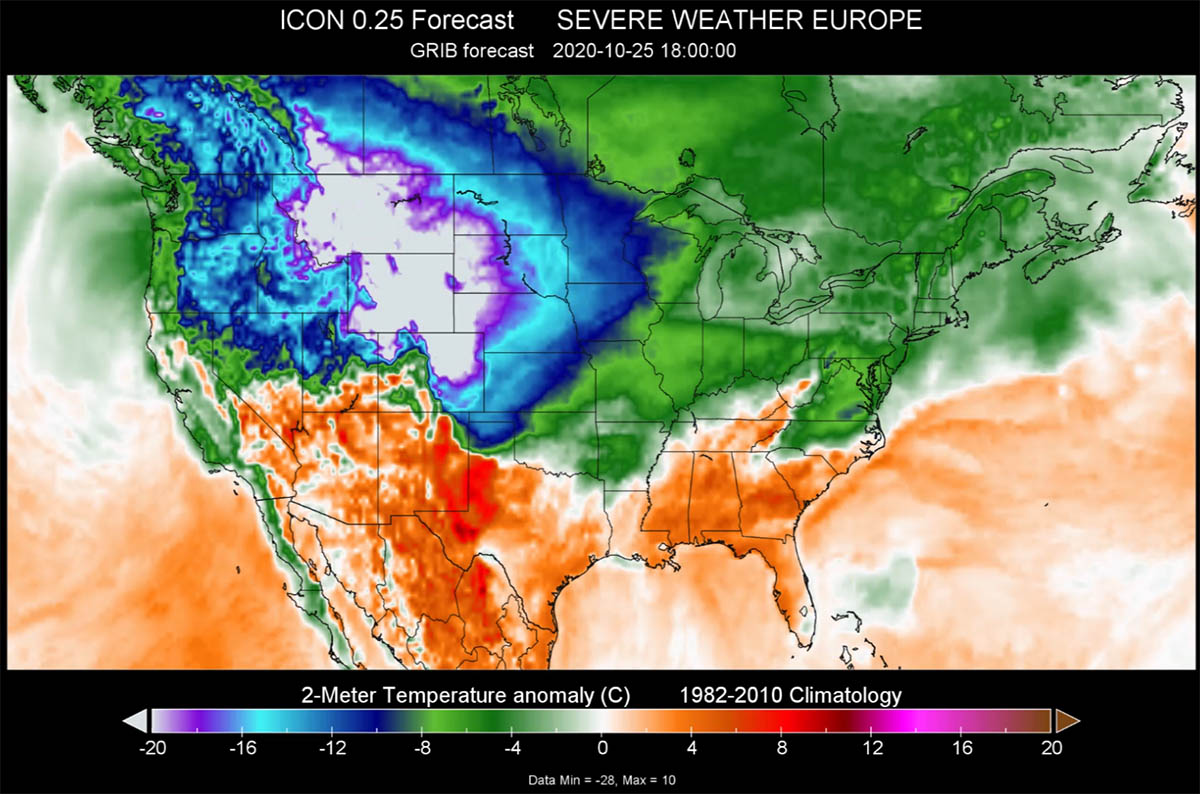It is looking as if our target of $3.50 for a front month this heating season, first mentioned in April and then repeated approximately every two weeks until I got sick of typing "$3.50" is going to happen. Here's a July 30 post, a storage report Thursday, when the front month dropped 5% in a couple hours:
That
is an overreaction and we are still looking for prices to move: first,
through the triple (or multiple) top just below the $2.00 line and
secondly, to a front month price of $3.50 later into the heating season.
Soon to roll-off November futures: 2.919 down 0.088 (almost 3%)
December's: 3.195 down 0.077
From the Energy Information Administration:
In the News:EIA forecasts higher-than-average residential natural gas consumption this winterAccording to October’s Short-Term Energy Outlook, EIA forecasts residential natural gas consumption for the 2020–21 winter season (October–March) to average 21.1 billion cubic feet per day (Bcf/d), an increase of 1.1 Bcf/d (5.3%) from the 2019–20 winter average. The higher expected residential consumption of natural gas this winter is primarily related to forecasts for colder temperatures this winter than last winter.
Last winter was notably warm, averaging 572 heating degree days (HDDs), compared with the 10-year average of 603 HDDs. The warmer-than-normal winter temperatures contributed to residential natural gas consumption averaging 20.0 Bcf/d last winter, the lowest since the 2016–17 winter. Based on weather forecasts from the National Oceanic and Atmospheric Administration (NOAA), EIA expects the 2020–21 winter to have 602 HDDs, which is only slightly higher than the 10-year average and about 5% higher than last winter. NOAA forecasts cooler-than-normal temperatures this winter in the North and warmer-than-normal temperatures in the South, which is, in part, due to the La Niña weather pattern.
Changes in consumer behavior due to COVID-19 mitigation efforts will also contribute to higher residential consumption of natural gas this winter. EIA expects work-from-home and virtual schooling policies to affect winter residential consumption because with more people home during the day, residential space heating demand will increase compared with last winter, prior to the COVID-19 pandemic.
Nearly half of all homes are primarily heated with natural gas. According to EIA’s Winter Fuels Outlook released on October 6, the average price of residential natural gas this winter for homes that primarily use natural gas for heating is expected to average $9.55 per thousand cubic feet (Mcf), down from $9.73/Mcf last winter. The lower average residential price of natural gas reflects generally lower natural gas spot prices in 2020. However, changes in natural gas spot prices generally pass through to residential consumers with considerable lag because some state utility commissions set the rates that utilities can charge for natural gas deliveries a year or more in advance. In addition, residential natural gas prices include charges not linked directly to spot natural gas prices, such as customer and distribution charges, which help utilities cover operational costs.
Despite lower prices, EIA forecasts higher residential natural gas consumption will lead to an increase in household expenditures for homes that primarily heat with natural gas. EIA forecasts average household expenditures for these homes will rise to $572 this winter, an increase of $32 (5.9%) compared with last winter....MUCH MORE
And from Severe Weather Europe, October 23:
Latest on US Arctic Outbreak: A record-breaking cold for many! Snow possible far south in Texas with a damaging ice storm across the Plains
... The weather will feel like it is January, not October. Temperatures are expected to be very low, nearly 40-50 degrees Fahrenheit below average!...MORE

Depending on where that blob of cold goes—right now it is forecast for sparsely populated Montana and Wyoming, but should it slide across to Minneapolis and then Chicago the residential burn would go through the roof.
Yesterday:EIA Natural Gas Storage Report: A little bit of cold weather and up goes the burn
If interested here's the post that marked the bottom:
EIA Natural Gas Storage Report, June 25: Yikes
That low print was at $1.463 which is something like a thirty year low.